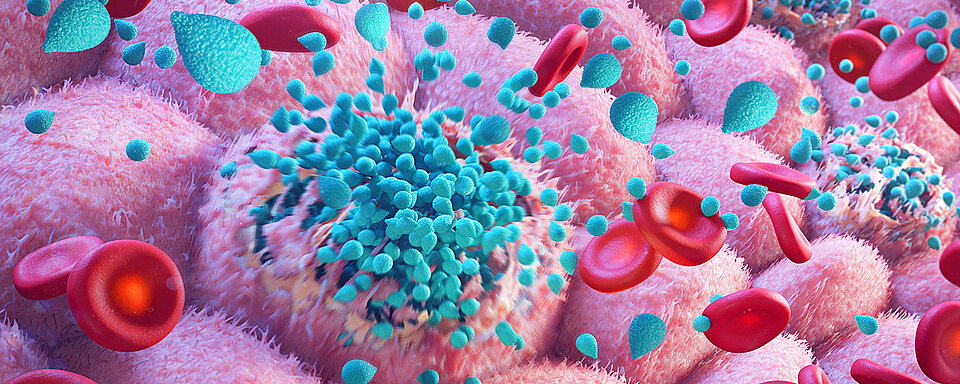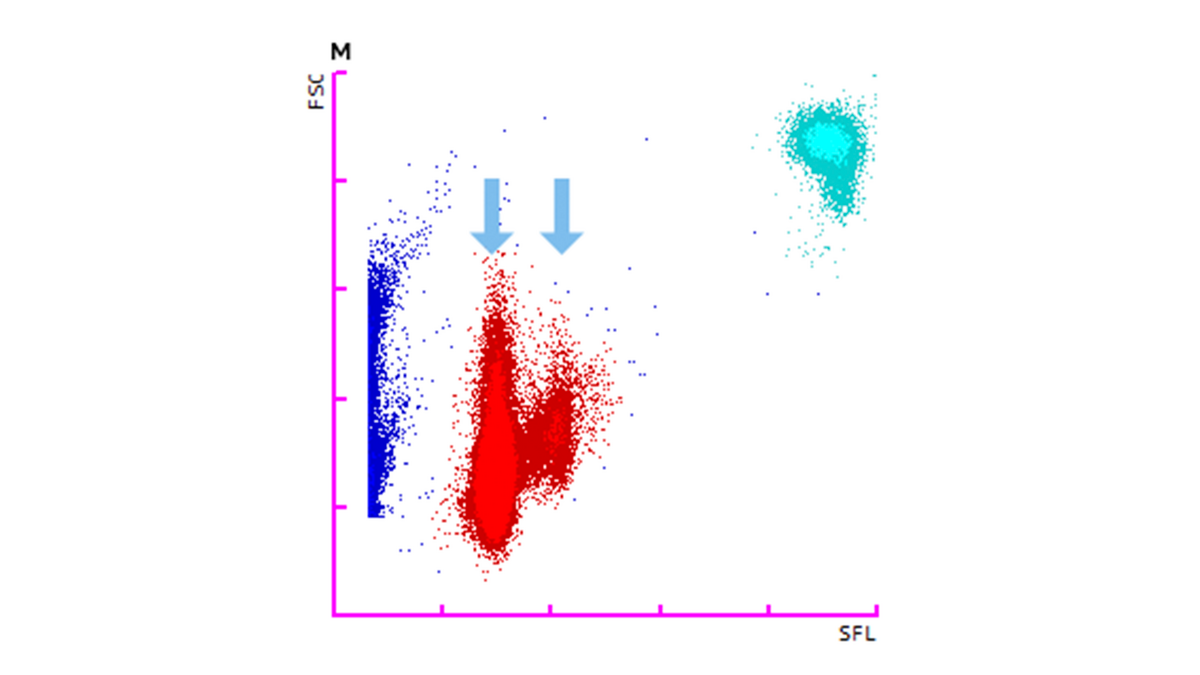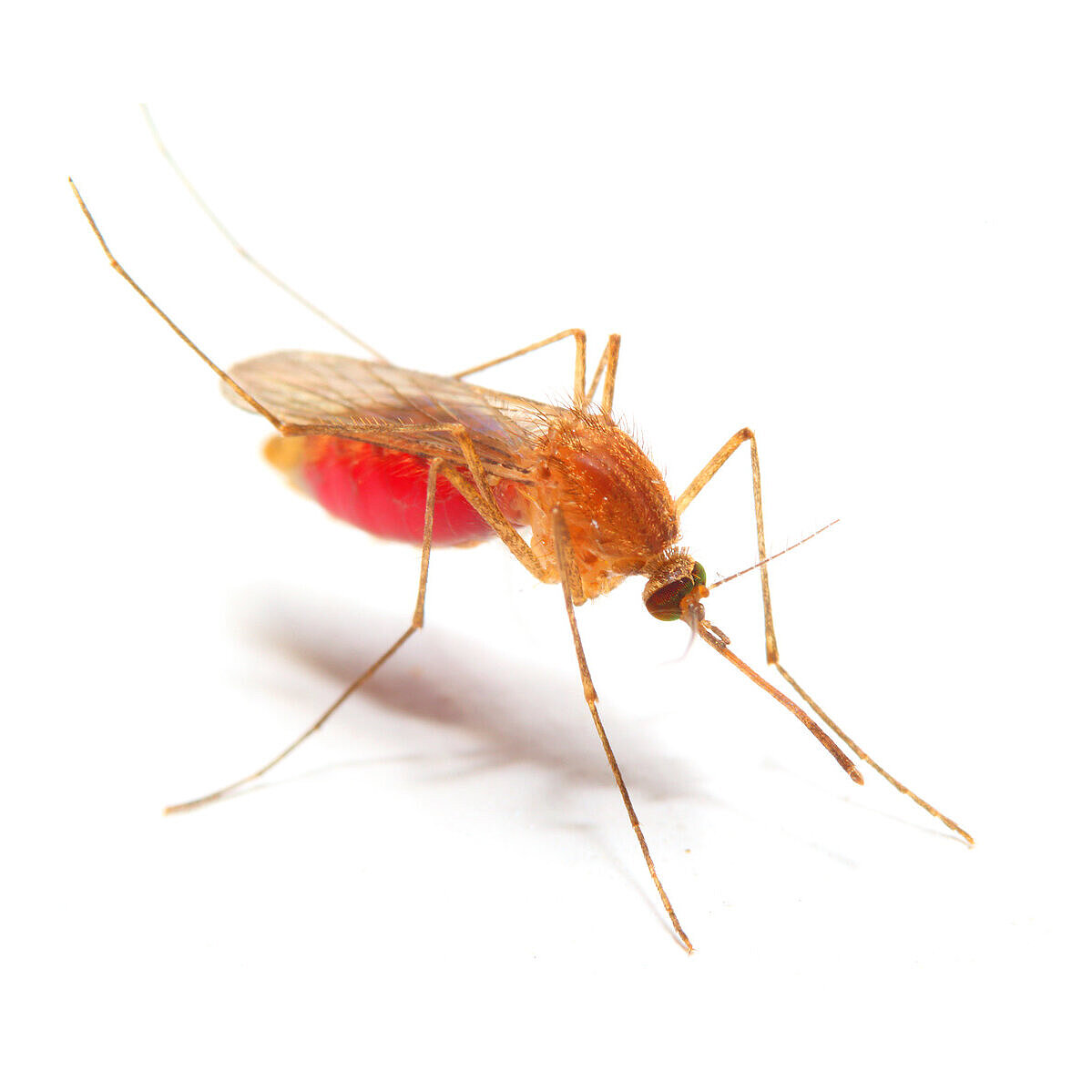Scientific Calendar April 2025
Malaria infection
How many merozoites are approximately released by one hepatic schizont? [1]
1–10
10–100
100–1,000
> 1,000
Congratulations!
That's the correct answer!
Sorry! That´s not completely correct!
Please try again
Sorry! That's not the correct answer!
Please try again
Notice
Please select at least one answer
Scientific background
Malaria is an infectious disease caused by single-celled parasites of the genus Plasmodium, which are primarily transmitted to humans via the bites of infected female Anopheles mosquitoes. The disease is a global health problem, with 40% of the world’s population at risk of infection, and an average of 250 million cases and 600,000 deaths reported each year. The most vulnerable population, due to their naïve immune systems, consists of children under five years of age, accounting for over 70% of annual deaths [2].
Malaria is concentrated in tropical and subtropical regions around the equator (malaria-endemic regions), where environmental factors favour seasonal or year-round transmission of the disease. A consistently warm climate (≥ 20° C) with long rainy seasons provides ideal breeding conditions for mosquitoes and facilitates the multiplication of parasites within them [3]. The most affected region in the world is Africa, with over 230 million cases annually and 95% of malaria-related deaths worldwide (Fig. 1) [2].
Five species of Plasmodium parasites are known to cause malaria in humans. The most notable are P. vivax, which has the widest geographical range, and P. falciparum, which accounts for over 95% of cases worldwide and causes the most severe form of the disease. Regardless of the species, the parasite follows the same complex life cycle in both mosquitoes and human hosts, passing through several developmental stages (Fig. 2): hepatic schizonts in the liver, merozoites, ring forms of immature trophozoites, late trophozoites, blood-stage schizonts, and gametocytes in peripheral blood, as well as sporozoites in mosquitoes [4, 5].
The manifestation of the disease depends on the level of immunity of the infected individual. A first exposure will yield a significant level of parasitaemia in the blood, with a low level of immunity since it is the first encounter with the parasite. This severe type of malaria is typically present in children under the age of five and in pregnant women, and is considered a medical emergency. Subsequent exposures to the parasite can result in milder disease as increased immunity lowers parasitaemia levels in the blood, producing the classical symptoms of fever, chills, and headache. Finally, after repeated exposures to the parasites, affected individuals may develop an asymptomatic form of the disease, as the parasites are quickly cleared from the blood [6].
Case results
A ten-year-old boy from a malaria-endemic area presented with asthenia, fever, and vomiting. Upon suspicion of malaria, a blood sample was analysed on the XN-31 analyser. The main findings included a relatively low platelet count of 152×103/µL, a highly increased MI-RBC# of 130.8×103/µL, and the flag ‘Malaria?(P.f)’ (Fig. 3).
The XN-31 analyser, which utilizes unique technology and reagents, can detect smaller particles inside cells compared to conventional XN-Series or XR-Series analysers. Malaria-infected red blood cells (MI-RBC) take up the fluorescence marker that stains the nucleic acids of the parasites, emitting a unique signal and clearly distinguishing this population on the M scattergram.
The M scattergram in this case indicates MI-RBC with ring forms, which are plotted in two different fluorescent light intensity areas (Fig. 4, arrows). The left cluster corresponds to red blood cells (RBC) infected by one parasite, whereas the right cluster indicates that two or more parasites have entered a single RBC.
Additional tests confirmed the results from the XN-31 analyser. A rapid diagnostic test for P. falciparum was positive, and microscopy of the thin blood smear showed markedly increased RBC infected with P. falciparum, which were presented as ring forms.
References
[1] Prudêncio M et al. (2006): The silent path to thousands of merozoites: the Plasmodium liver stage. Nat Rev Microbiol 4, 849–856.
[2] Global Malaria Programme (2024): World Malaria report 2024, WHO.
[3] Lefevre T et al. (2013): Non-genetic determinants of mosquito competence for malaria parasites. PLoS Pathog 9(6): e1003365.
[4] Sato S (2021): Plasmodium–a brief introduction to the parasites causing human malaria and their basic biology. J Physiol Anthropol 40(1): 1.
[5] Hill AV (2011): Vaccines against malaria. Philos Trans R Soc Lond B Biol Sci 366(1579): 2806–14.
[6] Mendonca VR et al. (2015): Immunoregulation in human malaria: the challenge of understanding asymptomatic infection. Mem Inst Oswaldo Cruz 110(8): 945–55.

Malaria has plagued humankind since ancient times and is still a significant threat to around half of the world’s population. Although malaria infections are primarily a problem in tropical regions, they occur ever more frequently also in non-endemic areas due to tourism and globalisation.









